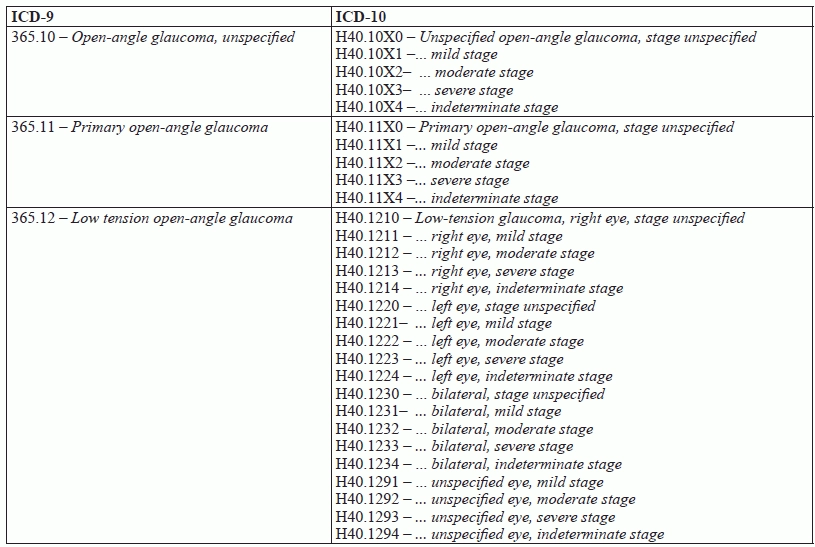Look Sharp: Oct. 1 Will Bring Changes to Your Open-Angle Glaucoma Coding
Tip: Seventh digit will describe glaucoma stage; sixth digit may designate an eye.
When it comes to a need for greater specificity, the eyes have it in ICD-10. Read on for instruction on how this works in your glaucoma reporting.
In ICD-10, eye codes have been expanded to increase anatomic specificity and add the concept of laterality. Many of the codes include right, left, bilateral and unspecified eye. If the option of “bilateral” is not available, and the condition is present in both eyes, it is correct to assign the code for right and left. However, if a code exists for bilateral, that should be assigned, not right and left eye.
Example: In the H40.12-- series (Low-tension glaucoma …), the sixth digit shows which eye the condition exists in:
Not all the glaucoma diagnosis codes have this level of specificity – many have an “X” for a sixth digit, as you’ll see in the table below. The “X” placeholder leaves room for further expansion of the code set.
The seventh digit describes the stage of the disease:
Putting it all together: Mild-stage low-tension glaucoma in the right eye would be coded H40.1211. Moderate-stage low-tension glaucoma in the left eye would be coded H40.1222.
Read on for some specifics of how your diagnosis coding for open-angle glaucoma will change once ICD-10 comes into effect on Oct. 1, 2015.
Stay tuned: Look for explanations of more of the open-angle glaucoma codes in an upcoming issue of Optometry Coding & Billing Alert.
Get ready: For more information on the ICD-10 conversion, as well as specific ICD-9 to ICD-10 code bridges, visit https://www.aapc.com/codes/.

